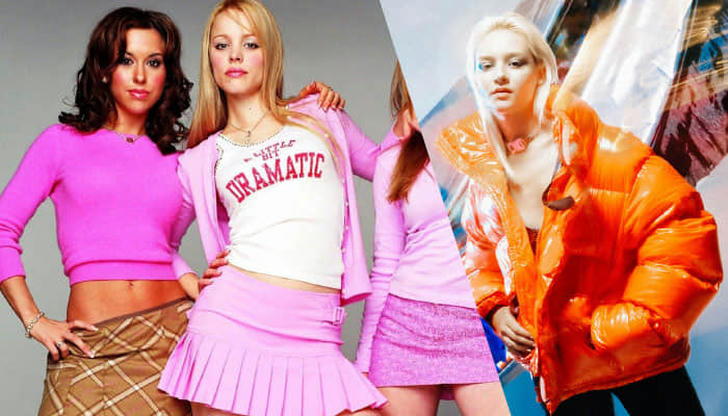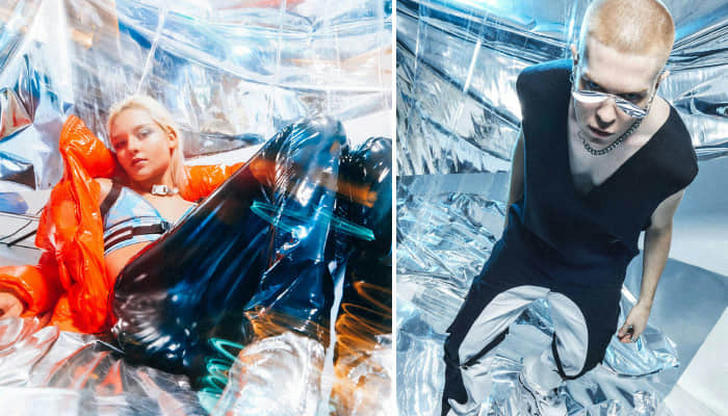From Y2K to McBling: The Evolution of Aesthetics

In recent years, the internet has witnessed a resurgence of trends from the 90s, 2000s, and beyond. Among these, the term "Y2K" has been frequently mentioned in connection with throwback styles. Despite discussions about its comeback dating back to 2016, it remains relevant in 2022.
I'm frustrated to hear the term so frequently and surprised at its enduring popularity, I decided to explore some of the biggest fashion trends of this year, such as micro-mini skirts and bedazzled low-waisted jeans. Interestingly, these trends belong to a different aesthetic known as "McBling," which is sometimes referred to as Y2K's "hungover cousin."
Coined by Evan Collins, McBling overlaps with Y2K for a couple of years. However, according to Collins, the two aesthetics are "diametrically opposed" in terms of style. McBling is associated with Von Dutch trucker hats, Juicy Couture velour tracksuits, baby tees with cursive fonts, and anything that exudes a sense of "bling," influenced by celebrity culture and luxury aspirations. In contrast, Y2K, named after the Y2K bug, is characterized by shiny fabrics, tight leather materials, silver eyeshadow, translucence, and other elements driven by tech optimism.
Based on research and insights shared by two designers, Collins and Froyo Tam, this passage will introduce the ongoing changes in trend cycles and common misconceptions about historical periods.
TIKTOK VIRALITY AND FASTER TREND CYCLES

"During the pandemic, there was this massive surge of trends related to core suffixes on TikTok—'cottagecore' being a prime example," Tam recalls. These were lifestyles that gained popularity when many of us were in lockdown. Media outlets seized on these trends as opportunities to create viral content. "There's a rush to cycle through content as quickly as possible, fueled by a strange machine that churns out articles," adds Collins.
In October 2021, the aesthetic known as "Indie Sleaze" was featured in a dazed article. Over the following two months, not only did other editorial platforms pick up on the trend, but fashion resellers like Depop also embraced it and used it as a trending tag. Similarly, another aesthetic called "Whimsigothic" gained traction on TikTok. However, its moment in the spotlight was short-lived as it became oversaturated with articles generated around it.
Tam suggests that crafting something attention-grabbing, overly simplified, and merely scratching the surface neglects the deeper societal influences behind it. This tendency fuels the rapid turnover of trends, a phenomenon she links to the hastening pace of capitalism.
In other circles, there's talk about the revival of mid-2010s Tumblr, breaking away from the conventional understanding of a 20-year trend cycle. Collins points out that due to the swift nature of media and its integration into culture, trends now rotate incessantly.
Y2K VERSUS MCBLING

With the inundation of bite-sized content flooding social media platforms, audiences find their attention spans shrinking and their grasp on information often lacking depth. This leads to misconceptions, as seen in the confusion between Y2K and McBling.
Reflecting on the past, Collins recalls McBling as a period marked by conservatism, reactionary attitudes, and a sense of regression. It was characterized by an obsession with status, material wealth, and a shallow, nihilistic atmosphere. In contrast, Y2K carried a spirit of optimism about the future, albeit somewhat misguided. Collins stresses the necessity of delving into the nuances and broader context of historical periods. He highlights the negative aspects of McBling, particularly its treatment of celebrities and its heavy gender bias.

WHAT CARI DOES

Despite the unstoppable flow of information, the duo endeavors to provide economic context for their findings through the research platform CARI. Collin expresses the importance of fostering an environment where in-depth analysis can thrive in the public realm.
In their research process, Collins and Tam engage in extensive image scanning and outreach to designers. Alongside sourcing relevant articles from the era, they seek firsthand accounts from individuals who worked in the 1980s and 1990s. This approach sheds light on the circumstances surrounding the emergence and disappearance of certain aesthetics.
Moreover, the duo's Discord server actively explores emerging styles. Collins is particularly intrigued by the resurgence of "Alt Psychedelia," a corporate reinterpretation of hippie and psychedelic themes from the 1960s and 1970s. Meanwhile, Tam admires Oakley's current branding, likening it to the "Apple, Garamond utopian scholastic vibe" reminiscent of condensed Serif fonts seen in Macintosh advertisements of the 1980s and 1990s.

When discussing their desired resurgences, both Collins and Tam express their fondness for 2000s aesthetics, highlighting elements like translucent blobjects and more experimental designs. Tam praises the iMac G3 as a quintessential piece of Y2K industrial design, noting its influence on products like the Nintendo 64 and Kodak DC240i Zoom cameras. However, its ubiquity eventually led to oversaturation, causing it to disappear from the scene after 2001.
In terms of design, Collins advocates for greater playfulness, craziness, and tackiness. He critiques the lack of diversity in contemporary designs, particularly evident in the standardized aesthetic of "Airspace" found in many Airbnbs. Reflecting on a 1997 interior magazine, he laments the lost freedom to create and experiment. Tam concurs, noting that economic pressures often lead to copycat designs and a fear of failure. She emphasizes the need for designers to have more budgetary flexibility to foster creativity and innovation once again.
